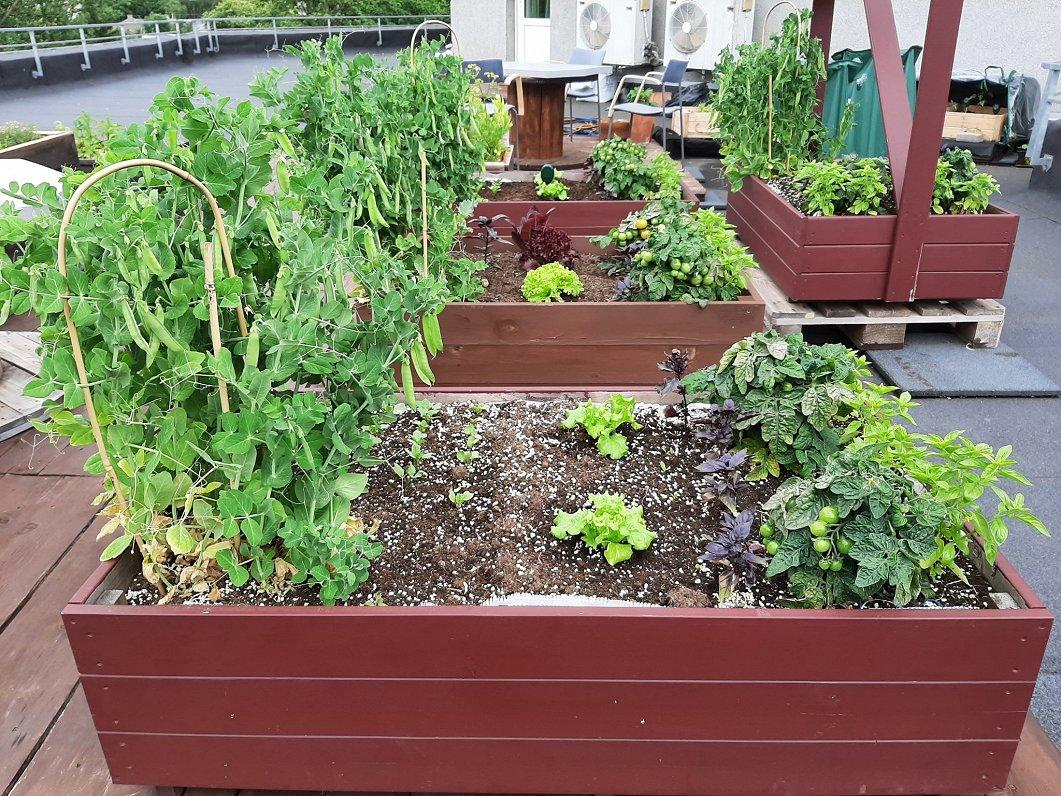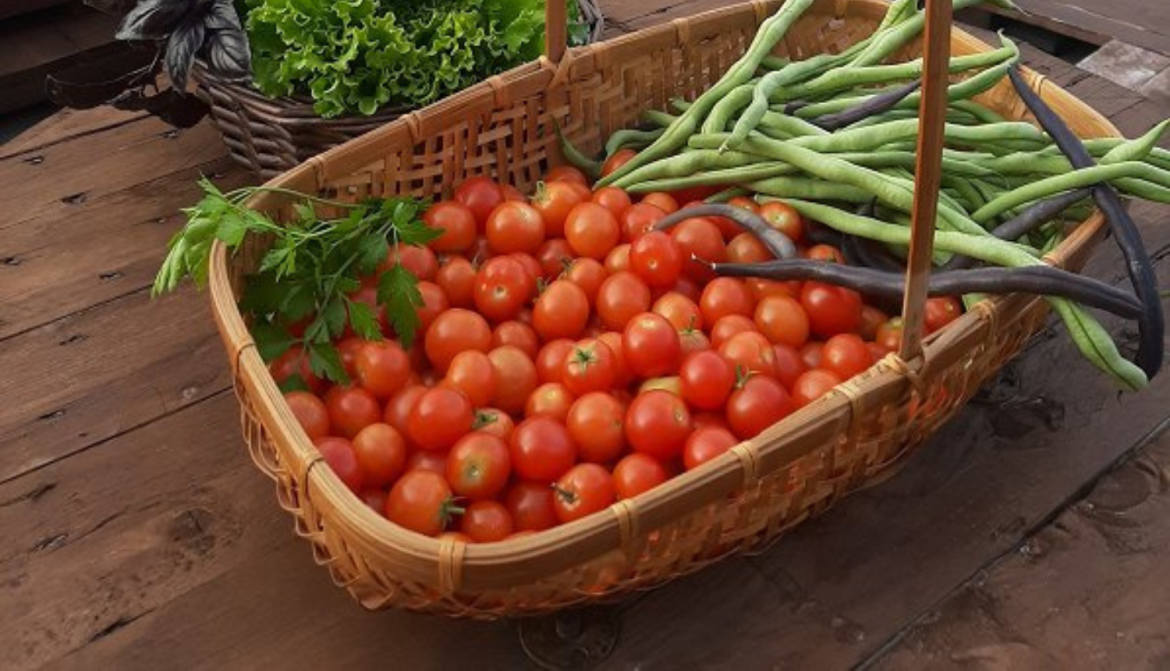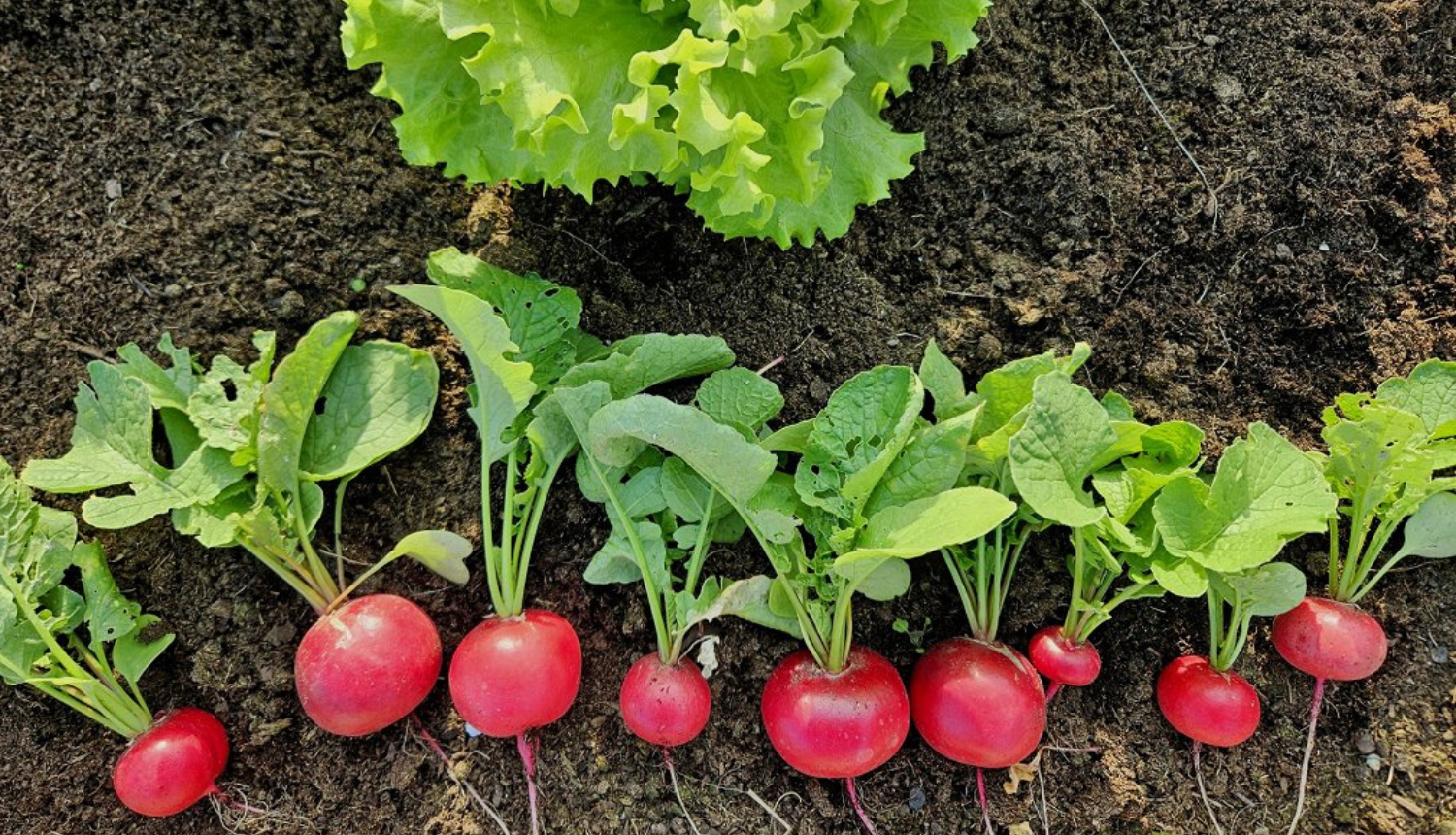By growing vegetables on a roof in Riga, researchers are trying to find out whether food grown in the city is as good as food grown in the countryside. The final results will be in the spring, when the guidelines developed by the researchers for urban gardening, including the best agrotechnological methods, will also be available to citizens.
In the "Roof 2 Fork" project, or "from roof to table", vegetables are grown in a rural environment by researchers of the Institute of Horticulture in Pūre. On the other hand, in Riga, the same plants are grown on the roof of the Institute of Agricultural Resources and Economics (AREI). This year, the second harvest was already harvested, and Linda Ieviņa, a researcher at the institute's Department of Bioeconomics, told about the crops chosen for the study:
"We grow the same thing. We have tomatoes, basil, lettuce, peas and radishes to ensure as many different product groups as possible, because, for example, if there is some pollution, then different plants may also accumulate this pollution in different parts."
Sensors placed in the soil that send data on soil temperature and moisture. What researchers are most interested in is soil moisture. In this way, it is possible to ensure as similar environmental conditions as possible in both places - in the countryside and in the city.

Photo: AREI city garden
"After that, if there are any differences in the analyses, these other external factors might not play a role. So we know that these differences are really caused by the fact that there is an urban environment or a rural environment, rather than the fact that one environment, for example, has had a greater moisture and therefore it develops some other effect," explained Ieviņa.
First observations - Riga is growing faster
The researcher explained that when cultivating a garden in the city, the biggest food quality problems can be caused by historical contamination in the soil. Transport and industry also have an impact, but the first results show that the air quality in the urban environment does not significantly affect the amount and quality of the harvest:
"Grows very well in both places. According to such first observations, everything happens faster in Riga, because the temperatures are higher in Riga. But in both places the plants are very healthy and the yield obtained is also very good. For example, in Riga this season we got more than 15 kilograms of small tomatoes. Calculating how much space they take up in the box and how much we had there - 18 tomato seedlings, basically two square meters in area, then 15 kilograms is a very good indicator, in my opinion."

Photo: AREI tomatoes’ harvest
In the laboratory, the chemical composition of the vegetable, nutrients and possible harmful substances are determined later.
"Is the metal content not too high, including nitrates, nitrites. Then we compare whether they meet the recommended norms or do not exceed them. Also between each other, are there any differences. At first glance, there are no excesses or significant differences between the two places," said Ieviņa.
Also experiment with the soil
When growing vegetables on the roof, there is no shortage of challenges - you have to fight bird attacks, as well as pests and diseases. The project also experiments with three different types of substrates to determine the best method of growing vegetables directly in the urban environment.
"We have a four-to-one ratio of peat and perlite as a standard control because that's basically one of the more common ones. Then as experimental variants we have a one-to-one ratio of peat with coir, and this year we also have peat with leaf compost. ."
A garden on the roof has several advantages
Although the project is still ongoing, the researcher has concluded that urban horticulture in Latvia still has great potential, because compared to other European cities, these gardens here develop more slowly. Family gardens, where vegetables are grown for self-consumption in the open ground, are more popular in Riga, but growing vegetables on balconies or roofs is rarely practiced by residents.
"These family gardens compete with each other with the development of other types of areas. Therefore, I think it is definitely worth looking at other resources, and then in the context of our project we focus on roofs. There are several such big pluses: firstly, it is a completely unused spatial resource, and there is a very large proportion of precisely this flat roof where it is possible to develop [gardens]. And also from an environmental and quality point of view, this elevation on the roofs provides greater isolation from the urban environment. Research also shows that if some kind of pollution in the urban environment can affect the quality of vegetables, then when you go higher on roofs or terraces or balconies, this pollution is significantly less," explained the researcher.
At the same time, there are also several aspects that must be taken into account, for example, the load on structures. "Certainly, if such ideas arise, then at the beginning you need to consult with a civil engineer. You have to evaluate the load-bearing capacity and all aspects of safety, this is very important," said Ieviņa. "But otherwise, I think it's really a very promising resource."
In the "Roof 2 Fork" project, the final conclusions about how the quality of food grown in the city and the countryside differs, are expected in the spring, when everyone will have the opportunity to get acquainted with the developed guidelines for growing vegetables on roofs. The project is financed by the Fundamental and Applied Research Program.
Photo: AREI
